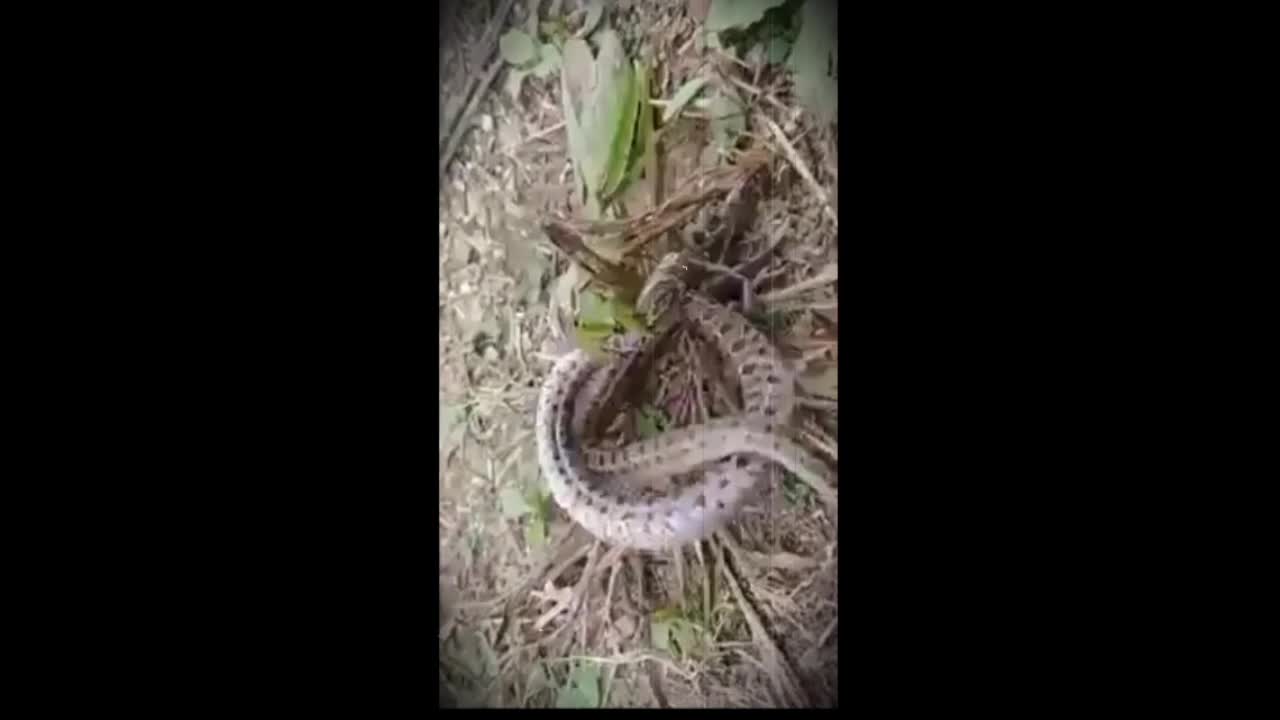Premium Only Content

snake vs grass ropper..grass roper cut snake head
thiss video contains grassropper fights with an snake..the snake is very strong but at last srassropper kills that snake without mersy
Grasshoppers are insects of the suborder Caelifera within the order Orthoptera, which includes crickets and their allies in the other suborder Ensifera. They are likely the oldest living group of chewing herbivorous insects, dating back to the early Triassic around 250 million years ago. Grasshoppers are typically ground-dwelling insects with powerful hind legs which enable them to escape from threats by leaping vigorously. They are hemimetabolous insects (they do not undergo complete metamorphosis) which hatch from an egg into a nymph or "hopper" which undergoes five moults, becoming more similar to the adult insect at each developmental stage. At high population densities and under certain environmental conditions, some grasshopper species can change colour and behaviour and form swarms. Under these circumstances they are known as locusts.
Insects in the group are plant-eaters, with a few species at times becoming serious pests of cereals, vegetables and pasture, especially when they swarm in their millions as locusts and destroy crops over wide areas. They protect themselves from predators by camouflage; when detected, many species attempt to startle the predator with a brilliantly-coloured wing-flash while jumping and (if adult) launching themselves into the air, usually flying for only a short distance. Other species such as the rainbow grasshopper have warning coloration which deters predators. Grasshoppers are affected by parasites and various diseases, and many predatory creatures feed on both nymphs and adults. The eggs are the subject of attack by parasitoids and predators.
Snakes are elongated, legless, carnivorous reptiles of the suborder Serpentes.[2] Like all squamates, snakes are ectothermic, amniote vertebrates covered in overlapping scales. Many species of snakes have skulls with several more joints than their lizard ancestors, enabling them to swallow prey much larger than their heads with their highly mobile jaws. To accommodate their narrow bodies, snakes' paired organs (such as kidneys) appear one in front of the other instead of side by side, and most have only one functional lung. Some species retain a pelvic girdle with a pair of vestigial claws on either side of the cloaca. Lizards have evolved elongate bodies without limbs or with greatly reduced limbs about twenty five times independently via convergent evolution, leading to many lineages of legless lizards.[3] Legless lizards resemble snakes, but several common groups of legless lizards have eyelids and external ears, which snakes lack, although this rule is not universal (see Amphisbaenia, Dibamidae, and Pygopodidae).
-
 1:28
1:28
Floridabobcat
3 years agoA snake in the grass...
79 -
 0:41
0:41
ARDELL13
4 years agoRat Snake in the grass
37 -
 0:21
0:21
Hookr47
4 years agoFake snake in the grass
545 -
 2:36
2:36
bluity
4 years agoSnake rack
56 -
 0:22
0:22
Englen85
3 years agoTime to cut the grass 😂
18 -
 12:50
12:50
JuanRuizArt
4 years agoHow to Paint a Snake Head - Wildlife Art
67 -
 1:11
1:11
cumlookyah
3 years agoDog vs Snake
122 -
 0:45
0:45
Hel's Duck Nuggets
3 years ago $0.01 earnedSnake Run
183 -
 0:39
0:39
stefsworld
3 years agoDog vs Baby Snake
51 -
 0:14
0:14
GingerDGG
4 years agoSnake talk
47